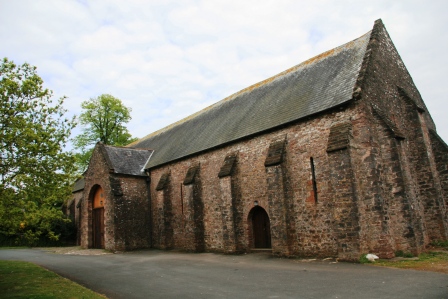In Utah there is a unique state holiday called "Pioneer Day", it is celebrated on July 24th. On this day there is a big parade in the capital city of Salt Lake, and included in the parade are many floats representing the founding and pioneer heritage of the state complete with people dressed up as pioneers pulling handcarts and riding in covered wagons. At the time that the Mormon Pioneers settled in Utah (1847), they met the Ute Tribe of Native Americans, and the Utah Territory, as it was called then, was not even a part of the United States yet. The following is an excerpt of an article I compiled about the Sabin Family, after doing several days of research at the Family History Library in Salt Lake City. My husband has some of the Sabin family on his family tree and a branch of the family were early Utah Pioneers. This is a Pioneer Story....
Nauvoo
and Westward:
David and Elizabeth Sabin received
their endowments in the Nauvoo
Temple. When the saints
left Nauvoo, they left too. They did not stay in winter Quarters, but settled temporarily,
near it. David’s blacksmithing expertise was put to use to help the saints
prepare to go west. In 1850, they made the trek westward with seven children,
and arrived in Salt
Lake Valley. Their boy,
Parley Pratt Sabin, was about two years old at the time. The family was part of the William Snow/Joseph Young Company (1850).
The
Sabin family had two wagons, one driven by horses under the direction of David,
and another which was driven by their oldest daughter, Elizabeth, and it was
pulled by an ox and a cow. When the family arrived in the Salt Lake they lived
in their wagon for a few years until they could build a small humble pioneer
home.
There
is an interesting story which has been passed down in the family about when the
family had their ox stolen after arriving in Salt Lake.
The beast’s name was “Cherry”, it was stolen and David observed, what he believed
to be his ox, in a holding pen with some other animals that were offered for
sale. David approached the person selling the animals and asked him about the
ox. The man told him he purchased the ox from some other men. David informed
the man that it was his ox, which had been recently stolen and the man asked
him if he was sure that it was his ox. David said yes, he was sure and said he
would show the man it was indeed his animal by bringing his daughter by because
she had driven that very ox across the plains and knew it very well. When Elizabeth came to see the
ox, she called to it by name; the beast knew her voice and came over to her.
The man gave the ox back to the Sabin family.
When the Sabin family finally
had a home, it was heart-wrenching for them to stuff it with hay and burn it; they had to burn it so nothing could be left for the enemies of the
Mormons, when the US Army came marching through Salt Lake. The family evacuated
southward. The Saints were not going to hand over, yet another beautiful
community, as they did in Nauvoo, to their enemies. The Saints even buried the
foundations of the temple they were constructing and were prepared to burn the
town down, if needed, rather that hand everything over to their enemies.
Because
of the evacuation the Sabin family settled in Utah County,
in the place that is now known as Payson. They were some of the first settlers
there. They planted many fruit trees and shared their bountiful harvest with
others. They even obeyed council from Brigham Young to the saints, to be
industrious and tried raising silk worms in their attic (it wasn’t very
successful though).
David
and Elizabeth Sabin had 11 children. Their names are as follows: Elizabeth,
Ambrose, Henry, Daniel, David, Mary Ann, Anna Maria, Parley Pratt, Sarah
Eleanor, Amanda Catherine, and Lydia Deseret. David and Elizabeth are buried in
the Payson cemetery.
 |
| David Sabin |
 |
| Elizabeth Dorwart Sabin |







